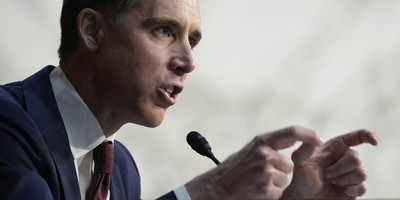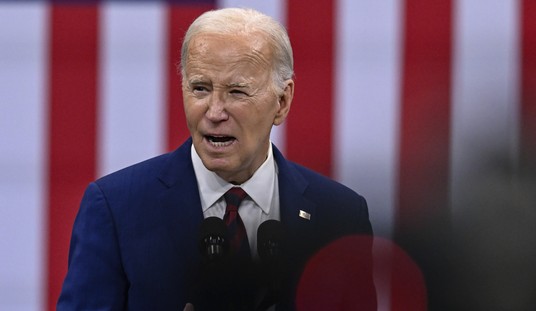We expect stronger 3.5% U.S. growth in the second half and a market shift from bonds to stocks as auto production picks up, growth in emerging markets remains strong and near-term concerns get resolved -- about QE2 ending, the debt limit increase, a China hard landing and a quick Greek default. (We think they’ll all be resolved favorably, but even unfavorable outcomes are better than the current uncertainty.)
Advertisement
- This year’s soft patch has been exaggerated by the emphasis on the auto sector in the data including ISM, other diffusion indexes, auto sales and industrial production. Jobless claims jumped due to the unique automatic feed from idled auto union workers to initial jobless claim benefits, but claims are still well below the level in the 2010 soft patch. As full auto production resumes, all those indicators will improve at the same time, exaggerating the upturn.
- This piece makes three points: the soft patch should be less severe than the one in 2010; the market implications are substantial; and some of the panic about the longer-term crisis will probably ease. We emphasize our view that global financial leaders are aggressively pushing problems past the current expansion cycle (leaving the consequences for the next recession or bear market). They are kicking the can hard down the road through absorption of debt into the sturdiest sovereigns; transfer of resources from savers to debtors through artificially low interest rates and transfer payments; shortening of U.S. national debt maturity through the QE2 debt buyback; no restraint on U.S. federal debt; unlimited ECB discounting of weak sovereign bonds; and forbearance (delay) in resolving weak debtors like Greece and weaker European banks.
Recommended
Advertisement
The 2011 soft patch should be less severe than the 2010 soft patch.
- Over the last three months, exports grew 20.4% on an annualized basis versus a slowdown to a 6.6% rate in the 2010 soft patch.
- On a 13-week annualized basis, large bank lending is up 20%, a sharp contrast with the -10% shrinkage rate during the 2010 soft patch. Lending by small banks is growing at a 4% rate versus a -3% shrinkage rate during the 2010 soft patch.
- Aggregate weekly hours, a measure of real growth, rose at a 3.9% quarterly annualized rate in March-May, well above the 2010 soft patch. Aggregate payrolls, a measure of nominal growth, are rising at a 5.7% quarterly annualized rate in March-May. In the 2010 soft patch, it was only growing at a 3.3% rate by August when the Fed hinted at QE2.
- Auto inventories are low and falling, versus a build-up during the 2010 soft patch.
- On June 30, we think QE2 will end quietly like Y2K did – QE2 wasn’t money printing and won’t be missed. We don’t think the U.S. debt limit will cause financial system problems. The muni bond default scare has calmed down -- we think there is a crisis in longer-term state finances due to large pension payouts and other factors but don’t agree with the high default estimates that hit 2010.
- A major concern in the 2010 soft patch was that Germany would not help much with a Greek bail out and thatGreece might exit the euro (which would create a financial Armageddon in our view.) The euro weakened sharply (see circle in the attached graph), but was less fazed in this year’s soft patch because Germany has taken a clear stand on the future of the euro and has mobilized resources. We don’t think any euro countries will leave the euro. The ultimate debt losses for Europeans are large but much of that has been priced in. We expect the ECB to hike rates again in July and think global bond markets will have to start viewing the ECB as the trend setter, not the Fed.
- In terms of market-based signals: Corporate bond spreads have remained narrow in this year’s soft patch versus the substantial widening in the 2010 soft patch; the Ted spread and LIBOR-OIS spread (measures of market aversion to interbank risk) are moving down, not up as they were in the 2010 soft patch; the equity VIX volatility index is staying calm, not jumping as it was in the 2010 soft patch.
Advertisement
We think bonds are in a bubble and expect sharply higher yields.
- Bond yields are being pushed down by price-indifferent Fed buying, confusion about QE2 ending (since large-scale Fed asset purchases are a radical policy departure), the debt limit uncertainty, the sharp slowdown in growth and Pimco’s announcement of a short-bond position. Yields should rise as: 1) QE2 finally ends without causing a tightening of monetary policy or a slowdown in money supply growth; 2) the debt limit problem is resolved without Treasury having to stop bond auctions; 3) auto production rises and improves macro indicators; and 4) U.S. CPI inflation rises toward 3.5% in May and June.
- The decline in bond yields in 2010 extended well beyond the soft patch in the economy, benefiting from the Fed’s announcement that it would buy $600 billion at any price. We think this year’s decline in bond yields will end sooner once it becomes clear that the Fed won’t be a new buyer and the growth picture stops deteriorating. We also think equities won’t correct as much as in the 2010 soft patch (when they fell 16%) because this year’s uncertainties aren’t as dangerous or open-ended as those in 2010.
- We share many of the complaints about the unsustainability of fiscal, monetary and regulatory policy. Theissue is whether the expansion is almost over. We don’t think so. Inventories are low. Housing starts can’t get worse. Extended unemployment insurance is running out. The real Fed funds rate is deeply negative, not a trigger for a near-term slowdown (though we think it is a harmful policy mistake.) Obama’s advisors are talking favorably about a payroll tax cut. There’s pent-up demand for new investment. Innovation is very strong – in energy, health care, pharmaceuticals, global finance, China’s consumer industry, technology and more. Given innovation, U.S. and global population and productivity growth, many well-chosen investments in emerging markets in recent years and human nature (to try to earn more tomorrow than today), we think the new norm is closer to 3% than 2% and that will become apparent in the second half.
Advertisement

























Join the conversation as a VIP Member